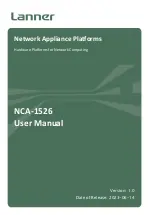
M o d e l N o . P S - 2 1 7 0
p H / I S E / O R P
5
012-09523B
Connect the pH electrode (or other electrode) to the pH/ISE/ORP port and start data collection. On your computer or interface,
display the
ISE Voltage
measurement (this measurement is valid for pH and ORP electrodes as well as ISE) or the
pH
mea-
surement for the calculated pH (assuming that the pH electrode is connected).
Measuring pH
The pH electrode produces a voltage proportional to the pH of the solution that it is immersed in. This voltage is measured by
the multi-sensor, which computes pH.
Unscrew and remove the storage bottle from the electrode (be careful not to spill the storage solution). Push the O-ring and
bottle cap up the electrode handle. Rinse the electrode tip with distilled water. If you see bubbles in the electrode bulb, gently
shake the electrode downward (similar to shaking down a thermometer). Start data collection. Place the tip of the electrode in
the solution to be measured and wait for the reading on your computer or interface to stabilize. Rinse the electrode with dis-
tilled water before measuring another solution.
pH Calibration
The pH measurement can be calibrated; however, for most applications calibration is not necessary. Perform a two-point cali-
bration with two buffer solutions of known pH. For instructions on calibrating in the sensor for pH, see the Appendices.
pH Electrode Maintenance and Storage
Cleaning
If the pH electrode becomes contaminated, use one of these methods to clean and restore it. After any of these procedures,
rinse the electrode with deionized water and soak the electrode in the electrode storage solution for 1 hour.
•
General Cleaning:
Soak the electrode in 0.1 molar hydrochloric acid (HCl) or 0.1 molar nitric acid (HNO
3
) for 30 min-
utes.
•
Bacterial Growth:
Soak the electrode in a 1:10 dilution of household laundry bleach for 15 minutes.
•
Protein Deposits:
Soak the electrode in a solution of 1% pepsin in 0.1 molar HCl for 15 minutes.
•
Inorganic Deposits:
Soak the electrode in 0.1 molar tetra sodium EDTA (ethylenediaminetetra-acetic acid) solution for
15 minutes.
•
Oil and Grease Film:
Wash the electrode carefully in a mild detergent or a solvent known to be effective for the particu-
lar film.
•
Unknown Contamination:
Soak the electrode alternately in 1 molar sodium hydroxide (NaOH) and 1 molar HCl. Leave
it in each solution for one minute. Rinse completely between soakings. End with HCl. (The NaOH etches the glass and the
HCl reestablishes hydrogen ions on the surface.)
If these steps fail to improve the response of the electrode, replace it with a PS-2573 pH Electrode (or equivalent).
Storage
Store the pH electrode in the included electrode storage bottle with one of the following solutions. (Never store the electrode in
distilled water.)
•
Short-term
(up to one week): pH 4 buffer solution or tap water.
•
Long-term
(over one week): pH 4 buffer solution with 1 g per 100 mL of potassium chloride (KCl) added.






























